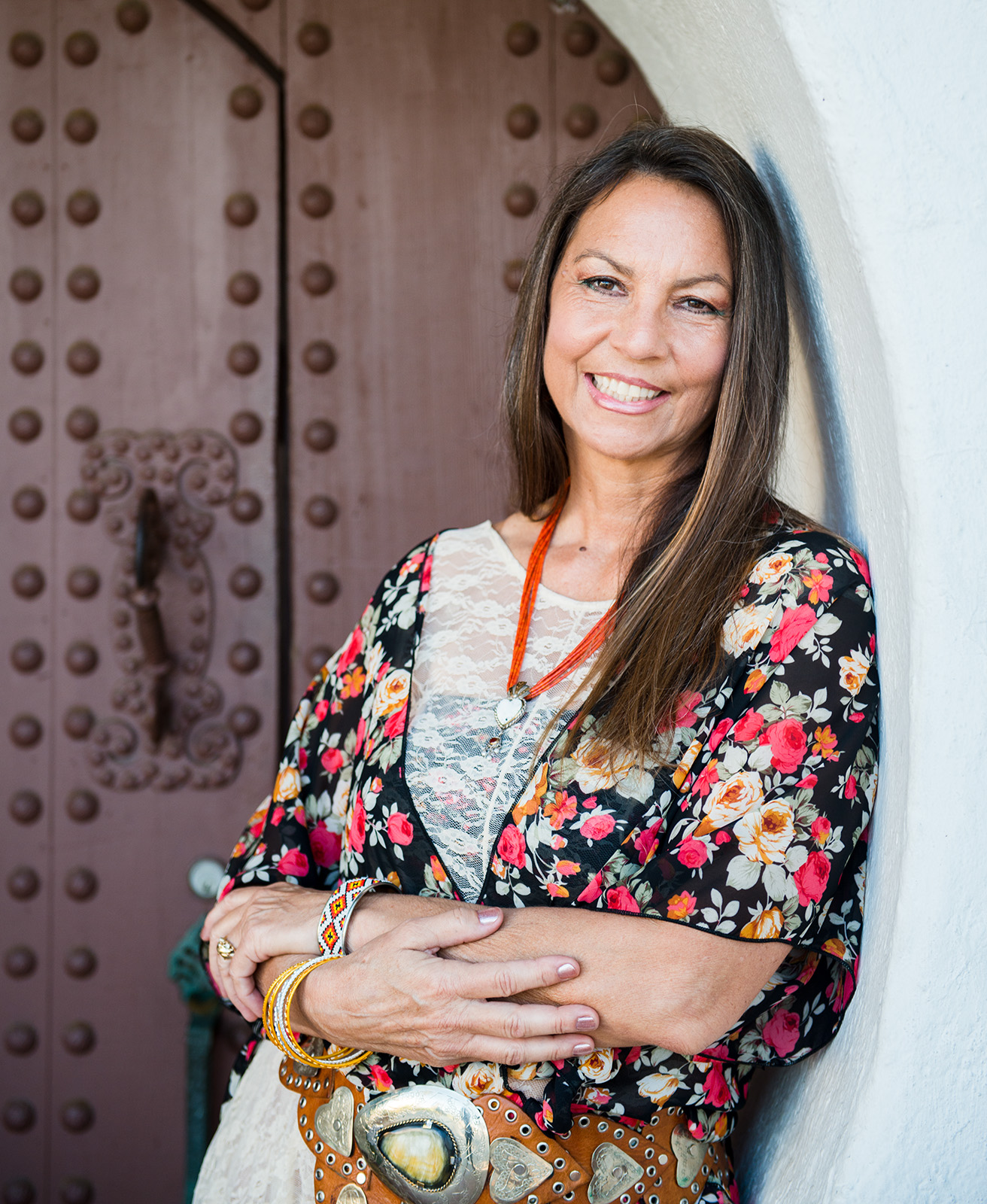Book talk to focus on environmental conflicts in Native American history

Dina Gilio-Whitaker is the author of “As Long As Grass Grows: The Indigenous Fight for Environmental Justice, from Colonization to Standing Rock.” She will be on campus for a book talk Tuesday. (Courtesy of Banana Bugz Photography)
"As Long As Grass Grows"
Tuesday, May 14
Bunche Hall
Free
By Alexsandra Coltun Schneider
May 13, 2019 11:31 p.m.
More than 1.5 billion acres of land have been taken from Native Americans, according to a study by Slate Magazine.
Amid the virtual normalization of this process, the idea of returning land to indigenous individuals shouldn’t be left off the table, said author and educator Dina Gilio-Whitaker.
UCLA’s American Indian Studies Center will host a book talk Tuesday in Bunche Hall focusing on Gilio-Whitaker’s book “As Long As Grass Grows: The Indigenous Fight for Environmental Justice, from Colonization to Standing Rock.” The book discusses the environmental conflicts Native Americans have faced. Gilio-Whitaker said she is interested in discussing the chapter in her book that focuses on Native American women and their ties to environmental issues.
“Native women have always been examples of profound leadership, even going back to the … early 20th century … where women fought equally side-by-side with men,” Gilio-Whitaker said. “Native people have (had) very sophisticated political cultures before people really even realized it.”
When settlers first came to America, they discovered how traditional indigenous societies were founded on the principles of gender equity, such as shared governance of power and equitable distributions of work, Gilio-Whitaker said. Research has found that early white feminists, like Elizabeth Cady Stanton, were neighbors with Iroquois women. In this regard, indigenous women have influenced others on the notion of gender equity, Gilio-Whitaker said.
The organization Women of All Red Nations, which was co-founded in 1974 by Native American women including Madonna Thunder Hawk and Janet McCloud, focused on reproductive rights for indigenous females. Additionally, water sources in South Dakota have been contaminated by uranium mining, Gilio-Whitaker said, which has caused high levels of birth defects and miscarriages for pregnant indigenous women. In this, Gilio-Whitaker said she sees the connection between the organization of Native American women and land protection.
[RELATED: Authors Tressie McMillan Cottom and Roxane Gay talk black feminism at Hammer event]
Marginalized communities – like indigenous individuals – are more likely to be affected by environmental issues, said Natasha Oviedo, a fourth-year history student. Oviedo said she believes oppression impacts marginalized communities, making leadership important for them. Environmental issues have become a popular discussion in the news and among UCLA students, but Oviedo said she feels she still has not learned much about the impact of environmental issues on marginalized communities in her classes. She plans to attend the event and learn about how indigenous women have led different movements.
“Coming to this book talk would be a way to learn more about how … (women) who are Native American have … been strong leaders in influencing the environmental movement and driving it many times,” Oviedo said.
Gilio-Whitaker’s research has also found that there were gendered issues during the Standing Rock protest in South Dakota. For example, nonindigenous women did not wear skirts during the protest. She said she found non-Native American women came to the space but did not follow Native American protocol because it did not match with their own traditional cultural expectations. Gilio-Whitaker said she found the actions of non-Native American women to be manifestations of white supremacy when it comes to shaping organized spaces.
[RELATED: UCLA art student creates piece melding ancient myths, technology]
All of the United States and Canada is indigenous land, said UCLA professor Mishuana Goeman. She said Native American women formed a larger collaborative system in the Standing Rock protests – rather than having just one female leader in charge. Goeman said students should think of land outside of the concepts of territory or property. She said the public should think about its relationship to land and water.
“Learn the history of that land (and) how to take care of it,” Goeman said. “It’s not just on native people to take care (of land) – it’s on everybody to do it.”
Gilio-Whitaker said environmentalists should not only look toward indigenous populations for inspiration, but also should listen to what they have to say. Whether indigenous individuals are organizing in urban or rural settings, Gilio-Whitaker said, the public should let them take charge of their own projects.
“In bigger organizing spaces, understand and listen to what native people are saying,” Gilio-Whitaker said. “Let native people take the leadership and don’t keep fighting to be the center of attention in their … land conservation projects.”

